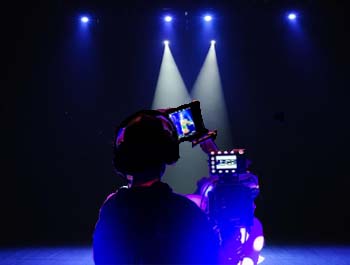
Here are some creative and effective ways to do so:
Multi-camera Live Stream: Set up multiple cameras strategically positioned around the stage to capture different angles of the performance. Switch between camera feeds in real-time to provide viewers with dynamic and immersive coverage.
Behind-the-Scenes Access: Offer exclusive behind-the-scenes access to rehearsals, backstage preparations, and cast interviews via live video streams on social media. This gives audiences a glimpse into the production process and builds anticipation for the main event.
Interactive Q&A Sessions: Host live Q&A sessions with cast members, directors, or production crew during intermissions or post-show discussions. Encourage viewers to submit questions in the comments section, and select a moderator to facilitate the conversation.
Live Audience Interaction: Incorporate live audience interaction by encouraging viewers to comment, react, and participate in polls or contests during the live stream. Engage with audience comments in real-time to create a sense of community and connection.
Virtual Front Row Experience: Offer a virtual front-row experience by live streaming the show from the perspective of a seat in the audience. Use high-quality cameras and audio equipment to provide viewers with an immersive viewing experience that makes them feel like they’re right there in the theater.
360-Degree Live Streaming: Experiment with 360-degree live streaming technology to give viewers the ability to control their viewing perspective and explore the stage and surroundings in real-time. This interactive feature allows audiences to feel like they’re part of the action.
Live Performance Teasers: Generate excitement and anticipation for the stage show by live streaming teaser performances or excerpts from rehearsals leading up to the main event. This provides a sneak peek of what to expect and encourages viewers to tune in for the full show.
Real-Time Updates and Highlights: Keep viewers engaged throughout the live stream by providing real-time updates, highlights, and behind-the-scenes anecdotes via text overlays or live commentary. This adds context and depth to the viewing experience and keeps viewers informed and entertained.
Interactive Storytelling: Use live video coverage to tell a compelling narrative that unfolds in real-time alongside the stage performance. Incorporate elements of storytelling, such as character backstories, plot twists, and interactive challenges, to keep viewers hooked from start to finish.
Post-Show Recap and Highlights: After the live stage show event, create a post-show recap video highlighting the best moments, audience reactions, and memorable performances. Share this video on social media to extend the reach and impact of the event beyond its live broadcast.
By creatively incorporating live video coverage into your stage show event on social media, you can engage a broader audience, enhance the viewer experience, and create lasting excitement and buzz around your production.






